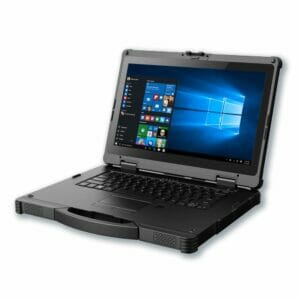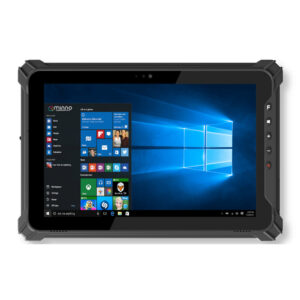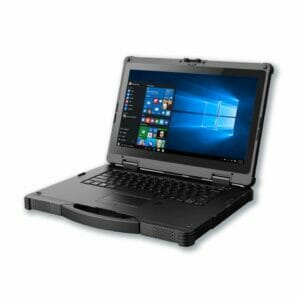If they haven’t been paying attention, some people are surprised to find that mobile devices are becoming a preferred platform for business.
Forrester Research finds more than half of employees use a tablet for work purposes at least once a week. While some employees bring their own tablet to work (a policy known as BYOD), Forrester data suggests that companies are increasingly providing corporate-owned devices to their employees – 29 percent already do.
There’s a growing trend now to consider “hardware as a service,” building the cost of a tablet into SaaS software subscriptions. The vast majority of software users are accessing business platforms from mobile devices today because the power of mobile technology is so transformational to the way we live and do business.
Following are five things we suggest businesses consider when moving their software to a tablet.
New User Experience
It’s important to focus on creating a new user experience when moving to a tablet. A tablet is a fundamentally different medium than a computer, so try not to recreate the 2-dimensional website experience on a mobile device. Mobile apps can be intuitive, engaging, and fun to use. A good user interface will drive a business process forward with a minimum amount of input and with no redundancy (fewer mistakes). Use the tablet’s capability to capture time, date, location, photos, etc. Once information is captured, it can be re-populated in other places within the app or in the cloud that need the same data. When designing an app, force yourself to think like a user of the app. Too many features clutter a user interface and can be confusing. Perfect the core functions of your business platform before adding a bunch of features that may degrade the user experience.
Responsive Design
It’s important to make the design of the mobile interface responsive. Responsive design means the layout and the content adapt to the size of the screen on which it’s presented. Test your application on multiple platforms and operating systems – even different versions of operating systems – to ensure that fonts, graphics, and data entry bars don’t shift or distort on different size screens or different devices. One of the many advantages of corporate-supplied tablets is that the graphics and the operation of your app can be optimized to a specific device provided to employees; saving time, headaches, and money in your IT department. Minno is in the business of supplying devices in volume to corporations who want a consistent, reliable, mobile platform.
Apps Should Leverage Device Capabilities
Applications should leverage the capabilities of mobile device hardware. Tablets are fundamentally different from a computer and much more powerful because they’re loaded with sensors that can provide situational awareness. Location, time, operation of the camera, even proximity to other users can be acquired from the device itself. In addition, you have communication and scanning capabilities like Bluetooth, near-field communication; and QR and barcode scanning technologies that can make data input rapid and error free. Each new sensor that gets added to a mobile device has the potential to deliver efficiency and value; in some cases, even change whole business models. So pay attention!
Design the App to Work Online and Offline
It’s important that applications be designed to work both online and offline. Wi-Fi access isn’t assured and even 4G/LTE mobile connectivity may be spotty in the field (not to mention expensive). Furthermore, public Wi-Fi access points pose significant threats to data security and should be avoided. Mobile apps can easily be used off-line for long periods of time and then sync with Wi-Fi or over a cell network when it’s available. So design applications to work seamlessly on or off line.
Increase Customer/Employee Engagement
Use a mobile app or device to increase customer and employee engagement. Whether your app is running on a company-supplied device or being downloaded onto personal devices, you are a button-click away from your customers at all times. Your icon on a device constantly reminds your customers of your brand. Once the core functions of an app are perfected, you can continue to engage customers by adding features they’ll use and appreciate. Around-the-clock connectivity means you have the potential to engage with customers (or employees) whenever and wherever they find themselves. It’s easier to turn them into evangelists for your brand on social media for instance if they are connected to it while they are still engaged and impressed with your brand. Minno brands tablets for companies by placing logos on the exterior as well as the bootup screen, so every device in the field becomes a walking billboard that can boost your brand’s recognition and remind your customers of the value you deliver to them.
So whether you’re designing an application for employees or for customers, it’s important to remember a tablet is it’s not a computer, therefore, design it with engagement in mind. Make it simple and easy to use, and don’t expect users to wade through a lot of distracting text. The best apps get used because they are easy and convenient. Leverage the power of mobile technology to save time and create value in every way possible for your users. Reduce input time by capturing data from the device itself and use the device app to drive your business process efficiently. Force yourself to view it as a user – keeping it easy, clean, engaging, and intuitive.

Minno stands for Mobile Innovation and Value
Minno is a privately held manufacturer of full-featured, high-performance rugged tablets (Android and Windows) and custom-designed or branded tablets for industry, education, and governments sold B2B in volume at prices well below retail brands. Minno rugged tablets are designed for high performance, durability, reliability, and versatility. Our tablets will change how your business operates and deliver value to customers by delivering productivity, efficiency, and business agility.



